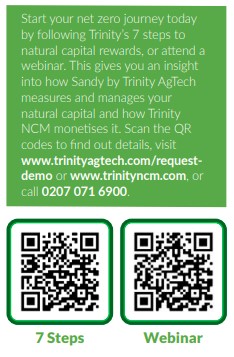Written by Tom Allen-Stevens from Trinity Agtech
New markets have opened up for carbon and biodiversity. When underpinned by digital software, international protocols and a just legal framework, they allow those who manage the land control over their natural capital and the income stream that’s opened up. Louisa Knocker from Trinity Natural Capital Markets addresses the queries.
Winter is a time of year when the differences are laid bare – quite literally in some respects. For those following regenerative agriculture, your fields are green, with a gratifying cover of biomass you’ve been careful to establish and cultivate. The ground walks firm – you can almost feel the thriving network of roots and the life they support beneath your feet. Your streams run clear, despite the heavy downpours that cause your neighbours so much grief and wash clouds of their soil and nutrients into the rivers and tributaries beyond your boundary.
But do you see this difference as a tradable asset, and are you adequately rewarded for the care you take with the resources you so skilfully manage?
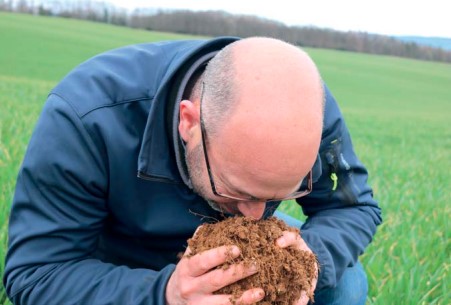
Carbon credits, with or without biodiversity and water protection cobenefits and biodiversity tokens are now clear and credible opportunities for farmers. The Environment Act has set legislation around the Government’s 25- year plan to leave the environment in a better state than they found it. This paves the way for a renaissance in the fortunes of the rural economy based not only on what the land produces, but how it’s managed.
Trading in the voluntary carbon market alone is predicted to be worth £40bn by 2030. But it’s a young, nascent market, open to inefficient and unfair trading. As such it can be difficult to know which deals will truly be in the best interests of those who care for their soils, and which will result in a corporate land grab, with good farming land covered in trees or left to rewild. There are also genuine concerns for the commitments these trades will bind the land to – whether these will result in farmers losing control of the way they manage their soils, and how tenants and contractors can be fairly rewarded for the work they collaboratively undertake with landowners.
Farmers who manage their natural assets through credible decision-support assistants will be the ones who retain control. Those who work through a rigorous and efficient digital market will reap the rewards. This will have the templates, model contracts and legal framework expected of any financial market for a fair and virtuous outcome for everyone’s collective gain. It’s the route that will ensure the best interests of the soil are a key outcome of current changes and will contribute to lasting, positive change for farming.
What is the opportunity?
The natural capital markets are driven firstly by the need to reduce emissions and keep global warming below 1.5°C. Coupled with this, the need to halt the loss of biodiversity has been enshrined into policy. While it’s incumbent on everyone to reduce emissions, there are some aspects of society and the activities we undertake, such as air travel and building houses, that will always carry a carbon or biodiversity cost. That makes natural climate solutions tradable commodities.
Meanwhile in the investment world, carbon markets are rapidly emerging as a very relevant and viable asset class for institutional and other major investors. More than 50% of global GDP depends on nature – an estimated £33 trillion – and 90% of natural capital is lost due to human behaviour. Already 25% of the world’s 500 largest companies have made carbon commitments by 2030, creating a voluntary market for natural climate solutions in the UK set to far outstrip the value of the wheat market.
But currently it’s still fragmented, insufficiently small and lacking in standard transaction processes, pricing mechanisms and transparency. Investors need authenticity and confidence in where to put their clients’ money. As a result, a major piece of work is being done by the Taskforce on Scaling Voluntary Carbon Markets (VCM) to grow the market, bringing trade that’s verifiable and environmentally robust. To ensure sellers can market their credits on a platform they trust, and buyers can find genuine, verified carbon credits, Trinity Natural Capital Markets (NCM) has been created. This new platform is aligned with the principles of the VCM taskforce’s recommendations and embodies the traits essential for fair, efficient and ethical transactions.
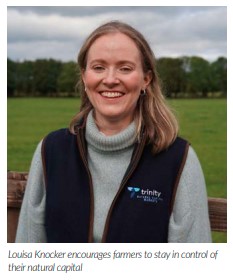
Do you have to reach net zero to trade? Unlike other industries, agriculture is unique in that it can sequester carbon and boost biodiversity. But there needs to be an economic rationale for the sector to reduce emissions and reach net zero to start to make this positive contribution. Certain companies are voluntarily willing to reward farmers to both reduce emissions and remove carbon. This may be those that deal direct with farmers and wish to contribute to tackle the climate crisis, beyond reducing first their own business emissions. Trinity NCM makes a distinction between reduction and removal credits, rewarding farmers for both. Reduction credits are for lowering emissions, such as through reducing use of synthetic fertilisers. Removal is for permanently sequestering carbon, such as through agroforestry or reducing tillage. You have to be reducing your overall carbon footprint to claim the credits, but can start to do so before you reach net zero.
For many direct drillers, however, net zero is a target they have already accomplished. Trinity NCM recognises this and also makes provision for the added societal benefit those growers bring through maintaining their carbon stock. Not only that, there are extra rewards for those who continue the good work towards a natural equilibrium in their soils.
How does it work?
When managing the aspirations of large corporate investors, it’s important to attractively package up what you have to sell. In this case that’s your natural assets – not just carbon, but biodiversity and water quality, too. This means investing in a decision-support system that helps you with designing your sustainability path and scientifically calculates your carbon credits with or without biodiversity. This then allows you to articulate what you have to sell on the open market.

Sandy by Trinity AgTech has been designed to do exactly that. It’s a piece of software – a digital assistant – that puts you in control of your natural assets, quantifying what you have in your care in the same way your profit and loss account and balance sheet assess your financial assets. Importantly, it frames your natural assets in a way investors can relate to. Sandy leverages the credits, and the credibility, to be a trusted partner of institutional investors and asset managers. Then through a well-aligned and rigorous marketplace – Trinity NCM – you can trade transparently and on your own terms. We’ve developed a process to help farmers through this journey, known as Trinity’s 7 steps. A key aspect is to establish your farm’s baseline, and Sandy does this by drawing in data from your farm management software on how you manage your soils. This means the very first step is to learn to love your data – the natural capital market is entirely digital, so the more digitally aligned your business, the easier it will be for your achievements to be recognised and rewarded.
That doesn’t mean relinquishing control of the data, though – it’s your data and will always remain so. Trinity AgTech and Trinity NCM are governed by a robust data ethics framework that allows complete control over whom the data is shared with. We’re also independent, designed with the interests of farmers and have no corporate backers, affiliations or shareholder interests that could distort our values nor our mission.
How are the credits assessed?
Just how natural capital should be evaluated is a topic of much debate. A Scientific Board of 35 of the country’s leading experts in this field oversee and review the criteria Sandy uses to determine this. For carbon, the methodology is a compilation of IPCC (Intergovernmental Panel on Climate Change) models coupled with peerreviewed emission-factor databases. It’s compiled and harmonised by the board with reference to their experience of modelling agricultural emissions, and to ISO standards.
For biodiversity, the methodology and its compilation are carried out by 17 of the foremost experts in the country. Both the evidence-based studies used and the modelling undergo peer review by the scientific board to ensure valid results, whatever land-use type. So the baseline assessment, which determines your carbon credits and biodiversity tokens, is established from farm and field management data, drawn from your records. This has been found to give a far more accurate picture of a farm’s biodiversity counts, water status and carbon levels than spot surveys. The assessment can be refined by adding in actual data gathered, although the caveat here is that poor data can skew the results.
How do you combat Greenwash?
Once you’ve assessed your baseline, Sandy helps you generate a plan to reduce emissions, sequester carbon and boost biodiversity, so you can trade the credits and tokens you’ll generate. But you may not want to go to the effort if the credits generated are wasted on emissions from third parties that you feel shouldn’t have been made in the first place.
Options available through Trinity NCM put you in control of who receives your credits:
1. Sell on the open NCM marketplace by setting a minimum price and wait for suitable bids to come in.
2. Sell to corporate investors, a prequalified buyer, whose price and criteria you agree with.
3. Use the credits to sell or barter with businesses you already have a relationship with such as processors, retailers or other land managers.
What are the legal implications?
It’s necessary to address first of all who owns the natural capital and has the right to trade the assets. Trinity NCM model contracts have been carefully put together to provide flexibility and transparency. This ensures harmonious legal and contractual underpinnings between landlords, tenants and contractors, as well as fair governance and delineation of the different activities that may be undertaken.
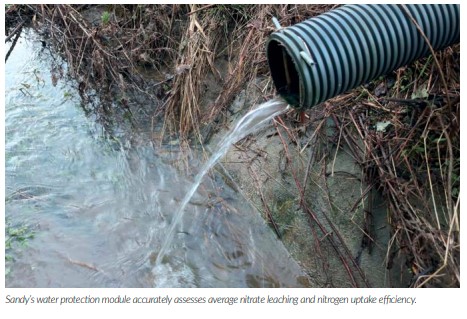
Carbon credits and biodiversity tokens are traded on the basis that you undertake to reduce and/or sequester carbon. This commits you to a contract that can go for one year up to 20 years, but again there’s flexibility and protection built in. You can’t sell carbon credits until the carbon has been removed from the atmosphere, in the case of removal credits, or you can show that it hasn’t been emitted, for reduction credits. While reduction can’t be reversed in the year it occurred, removal can, through cutting down trees or ploughing land, for example.
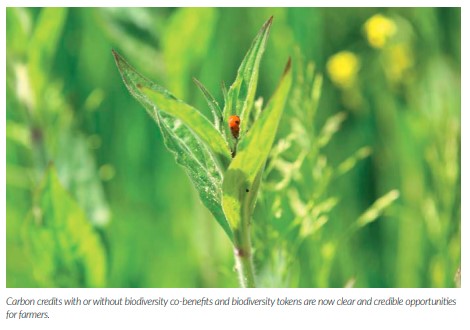
If the reversal is intentional, such as ploughing up land following a change in farm policy, the whole contract is cancelled and any unsold credits are not marketable. The seller will be liable to release funds held in an escrow account. A reversal can also happen through an unintentional event. For these circumstances, a buffer pool of your credits is retained in your Registry, which accounts for a proportion of the removal credits identified by Sandy. This pool of untraded credits is drawn down should there be unforeseen weather events, for instance, that cause a change in farm practice – quite literally your rainy-day fund.
